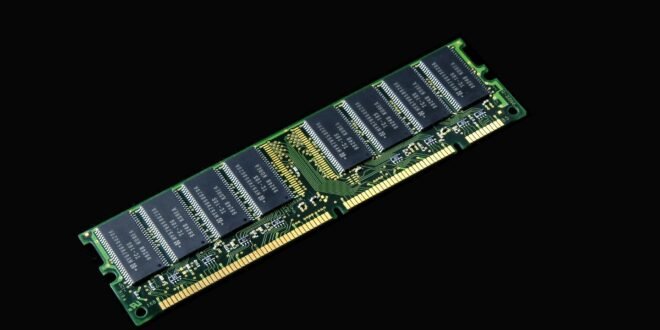How Much RAM Do You Need
Introduction
Choosing the right amount of RAM (Random Access Memory) is essential for optimizing computer performance and ensuring a smooth user experience. RAM influences the speed and efficiency of a system, as it temporarily stores data and instructions that the CPU (Central Processing Unit) needs to access quickly. This guide will help you determine how much RAM you need based on your usage patterns, software requirements, and budget considerations.
Understanding RAM and Its Role
RAM is a type of volatile memory, meaning it only stores data while the computer is on. When you open a program, the data needed to run that program is loaded from the hard drive into RAM, allowing the CPU to access it quickly. More RAM generally means better multitasking capabilities and faster performance, as the CPU can keep more data readily accessible without resorting to slower storage solutions like hard drives or SSDs.
Common RAM Capacities and Their Uses
- 4GB RAM:
- Best for: Basic tasks such as web browsing, word processing, and emailing.
- Limitations: Struggles with multitasking and running modern software.
- Suitable Devices: Entry-level laptops, budget tablets, and basic desktops.
- 8GB RAM:
- Best for: Everyday computing, moderate multitasking, light gaming, and basic photo editing.
- Performance: Sufficient for most home users who don’t run memory-intensive applications.
- Recommended For: Standard laptops and desktops.
- 16GB RAM:
- Best for: Heavy multitasking, gaming, professional video editing, and software development.
- Performance: Offers a noticeable boost for power users and gamers, allowing for smooth performance with demanding applications.
- Target Audience: Gamers, content creators, and professionals needing reliable performance.
- 32GB RAM:
- Best for: Advanced gaming, professional video editing, 3D rendering, and running virtual machines.
- Usage: Provides the ability to run multiple high-end applications simultaneously without a hitch.
- Ideal Users: Creative professionals, engineers, and users running virtual machines for development purposes.
- 64GB RAM:
- Best for: High-performance workstations handling intensive workloads, such as scientific simulations, 4K video editing, and complex database management.
- Application: Suitable for environments requiring extreme multitasking and processing power.
- Audience: Enterprise-level users, research scientists, and professionals in data-heavy industries.
- 128GB RAM and Above:
- Best for: Specialized tasks such as large-scale simulations, data analysis, and artificial intelligence modeling.
- Purpose: Generally reserved for servers and high-end workstations that need to handle massive datasets.
- Users: Enterprises, researchers, and institutions with specific and demanding computational needs.
Key Considerations for Choosing RAM Capacity
- Operating System Requirements:
- Operating systems have minimum RAM requirements. For instance, Windows 10 requires at least 2GB of RAM to run, while macOS Catalina requires 4GB.
- Opt for at least double the minimum required RAM for smoother performance and to accommodate additional software and multitasking.
- Software Requirements:
- Review the recommended RAM requirements of frequently used software. For example, Adobe Photoshop recommends at least 8GB of RAM, while video editing software like Adobe Premiere Pro benefits from 16GB or more.
- Multitasking Needs:
- If you regularly run multiple applications simultaneously (e.g., a web browser, email client, and Office suite), consider a higher RAM capacity to avoid slowdowns and improve responsiveness.
- Gaming Requirements:
- Modern games can require significant RAM, often 16GB or more for optimal performance. However, some games can run with less, while AAA titles may benefit from 32GB in high-resolution settings.
- Future-Proofing:
- RAM is often not user-upgradeable on certain devices, such as ultrabooks and some all-in-one PCs. Consider opting for more RAM to ensure your device can handle future software updates and increased workload demands.
RAM Types and Speeds
- DDR (Double Data Rate): The most common type of RAM, with various generations (e.g., DDR3, DDR4, DDR5) offering different speeds and efficiencies.
- RAM Speed (MHz): Measured in MHz, higher speeds can slightly improve performance, especially in tasks reliant on memory bandwidth, such as gaming and video editing.
Choosing RAM for Laptops vs. Desktops
- Laptops: Often have limited upgrade options. Choose the highest RAM configuration within your budget when purchasing.
- Desktops: More flexible, with most allowing easy RAM upgrades. Opt for a motherboard with multiple slots to expand capacity in the future.
Determining the right amount of RAM depends on your specific needs, budget, and anticipated usage. Casual users may find 8GB sufficient, while professionals and gamers can benefit from 16GB or more. For those with highly specialized tasks, investing in 32GB or 64GB may be worthwhile. By considering these factors, you can ensure that your system remains responsive, efficient, and capable of handling future demands.
 Smart World Leading conservative magazine covering news, politics, current events, and culture with in-depth analysis and commentary
Smart World Leading conservative magazine covering news, politics, current events, and culture with in-depth analysis and commentary
